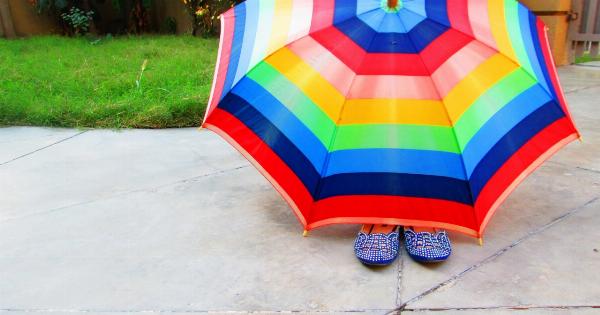Corneal burn, also known as photoceratitis, is a condition that occurs when the cornea, the clear front surface of the eye, is exposed to high levels of ultraviolet (UV) radiation.
This is usually caused by prolonged exposure to sunlight, particularly in high-altitude environments or near reflective surfaces like snow or water. In this article, we will explore the symptoms of corneal burn, also known as snow blindness or welder’s flash, and provide insights into its causes and treatment options.
The Cornea: A Vital Component of Vision
Before delving into the symptoms, let’s understand the importance of the cornea. The cornea acts as a protective barrier for the eye, transmitting and focusing light onto the retina, which then sends signals to the brain to create visual images.
It is crucial for maintaining clear vision and protecting the inner structures of the eye from external harm.
Symptoms of Corneal Burn
When the cornea is exposed to excessive UV radiation, it can lead to the following symptoms:.
1. Eye Pain and Discomfort
Corneal burn often results in severe eye pain, discomfort, and a gritty or foreign body sensation. This can make it challenging to keep the eyes open or tolerate bright lights.
2. Redness and Swelling
The affected eye may appear red and inflamed due to the body’s response to the corneal injury. This can be accompanied by excessive tearing and a feeling of dryness.
3. Sensitivity to Light
Photophobia or extreme sensitivity to light is a common symptom of corneal burn. Even dim or indirect light can cause significant discomfort and worsen the pain.
4. Blurred Vision
Corneal burn can cause temporary vision impairment, leading to blurry or hazy vision. This can hinder daily activities such as reading, driving, or using electronic devices.
5. Watery Eyes
The eyes may tear excessively as a protective response to the corneal injury. These tears are not necessarily related to emotions and may occur spontaneously or with any eye movement.
6. Headaches
Due to the strain on the eyes and the difficulty in focusing, corneal burn can frequently result in headaches. These headaches may be localized around the eyes or extend to the temples and forehead.
7. Sensation of Something in the Eye
A feeling of having a foreign body or sand-like particles in the eye is a typical symptom of corneal burn. This can further exacerbate eye discomfort and can lead to an increase in rubbing or touching the eye.
8. Excessive Tearing
Excessive tearing, also known as epiphora, can occur as a protective mechanism to flush out any irritants or foreign particles from the eye. It is often accompanied by redness and swelling.
9. Grittiness or Itchiness
The cornea may feel gritty or itchy due to the damaged surface and inflammation caused by corneal burn. This can be bothersome and may trigger the urge to rub or scratch the eyes, worsening the condition.
10. Temporary Vision Loss
In severe cases of corneal burn, temporary vision loss may occur. This could be due to swelling of the cornea or damage to the cells responsible for clear vision. If vision loss persists or worsens, immediate medical attention is crucial.
Seeking Medical Assistance
If you experience any of these symptoms after being exposed to excessive UV radiation, it is essential to seek prompt medical attention. An eye care professional can accurately diagnose corneal burn and provide appropriate treatment options.
Treatment Options for Corneal Burn
The treatment for corneal burn focuses on alleviating symptoms and promoting healing. Common treatment approaches include:.
1. Artificial Tears and Lubricating Eye Drops
To relieve dryness, redness, and discomfort, artificial tears and lubricating eye drops are often prescribed. These help keep the eyes moisturized and provide temporary relief from the symptoms.
2. Antibiotic Eye Drops or Ointments
As a preventive measure against infection, antibiotic eye drops or ointments may be prescribed. This helps reduce the risk of developing secondary infections that can further compromise the healing process.
3. Cold Compresses
Applying a cold compress to the affected eye can help reduce inflammation and relieve pain. This can be done by placing a clean, damp cloth over the closed eyelid for a few minutes at a time.
4. Protective Eyewear
Wearing sunglasses or protective eyewear with UV filters is crucial to prevent further damage and protect the eyes from harmful UV radiation. It is important to ensure that the eyewear covers the entire eye area, including the sides.
5. Pain Medication
Over-the-counter pain medications, such as acetaminophen or ibuprofen, can be taken to alleviate pain and reduce inflammation. However, it is important to consult a healthcare professional before taking any medication.
6. Avoiding Further UV Exposure
It is vital to prevent additional UV exposure while the cornea is healing. This involves staying indoors, wearing sunglasses even in overcast weather, and limiting screen time.
Preventing Corneal Burn
Prevention is always better than cure when it comes to corneal burn. Here are some preventive measures:.
1. Wear UV-Protective Eyewear
Choose sunglasses or protective eyewear that offer 100% UV protection. Look for labels that indicate the level of UV protection provided, ensuring both UVA and UVB rays are blocked.
2. Use Broad-Spectrum Sunscreens
Apply sunscreen around the eyes, ensuring it is broad-spectrum and has a high SPF. This helps shield the delicate skin around the eyes and reduces the risk of UV-related eye damage.
3. Take Breaks in Shaded Areas
If spending time outdoors during peak UV hours, seek shade or take regular breaks in shaded areas to reduce direct sunlight exposure to the eyes.
4. Wear Hats with Wide Brims
Wide-brimmed hats can provide additional protection for the eyes and face by casting a shadow and reducing direct exposure to sunlight.
5. Be Aware of UV Reflective Surfaces
UV radiation can be intensified by reflective surfaces like water, sand, snow, or concrete. Take extra precautions when in these environments to minimize UV exposure.
Conclusion
Corneal burn, or photoceratitis, is a painful condition caused by excessive UV radiation exposure.
Understanding its symptoms, seeking timely medical attention, and taking preventive measures are crucial for maintaining healthy vision and protecting the eyes. By following proper eye care practices and adopting preventive strategies, we can significantly reduce the risk of corneal burn and its associated symptoms.


























